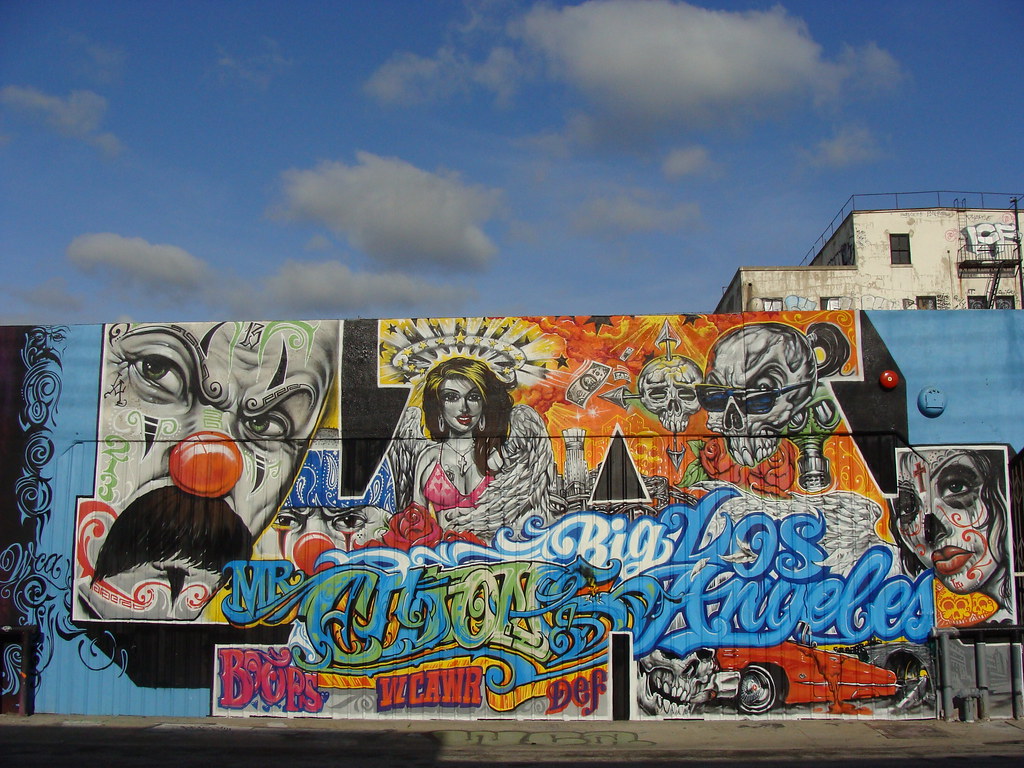At the LA Review of Books, Rodrigo Ribera d’Ebre provides a brief history of street gangs in twentieth century Los Angeles and traces how their graffiti, tattoos, and murals have influenced the increasingly vibrant contemporary art scene in LA. Here’s a snippet:
In the late 1960s and early 1970s, it became commonplace for the typographic styles of graffiti to be transferred directly to skin via amateur tattoos in prison. At the same time, artists like Willie Herrón, Chaz Bojorquez, Lucila Villaseñor Grijalva, and others began to incorporate gang-style graffiti lettering and imagery into their artwork, which fluidly appeared on business cards, periodicals, gallery exhibitions, public walls, and other nontraditional sites. The mural painting that began in public housing projects as a form of social transformation and neighborhood solidarity grew into a significant way to reclaim public space. All community members took part in the mural process. Often, rival gang members worked on murals together, depicting a cyclical process of gang violence and life in public housing via symbolism, and an emerging social consciousness encouraged a peace accord for the duration of the mural process. The success of the murals in the projects influenced citywide murals and, by the 1980s, Los Angeles was hailed as the mural capital of the world.
In 1976, tattoo artists Charlie Cartwright and Jack Rudy opened a tattoo parlor on Whittier Boulevard in East Los Angeles and created single-needle, black and gray, fine-line tattoo art. Until that point, this tattoo aesthetic was primarily only rendered illegally by Mexican-American inmates in the prison system. When the Dogtown skateboarding phenomenon appeared in the Venice/Santa Monica area in the late 1970s, the punk/cholo aesthetic of the region resonated with disillusioned youth across the nation. A few years later, New York–style graffiti took Los Angeles by storm and once again an underground social movement transformed local youth. By the end of the decade, street gang and New York-influenced graffiti, Dogtown style, prison-style tattoo art, and public murals transformed the built environment and contemporary art. Today, approaches that started in the streets and jails of Los Angeles have influenced artists in Tokyo, Mexico City, Sao Paulo, Barcelona, Sydney, Amsterdam, Berlin, and beyond. For more than 80 years, Mexican-American street gang culture has impacted contemporary art via a “dark progressivist” vernacular and today it can be seen as a cultural commodity experienced anywhere from iPhone cases to commercial airlines.
